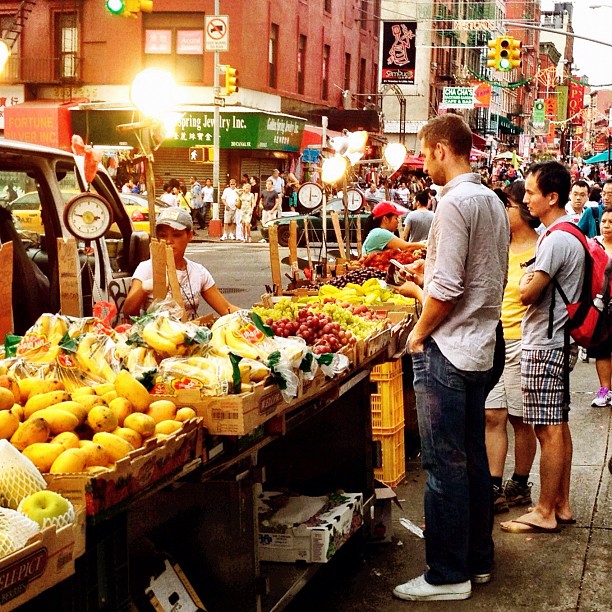
New York is a cultural hub that constantly changes with the shifting population living within it. While Chinatown is often seen as a place to go and eat authentic Chinese food or familiarize oneself with Chinese culture, the neighborhood has changed, even within the last 18 years.
Fruit Stands

In Chinatown, food stands sell a plethora of exotic Chinese fruits such as dragonfruit and lychees that are otherwise hard to come by. Some of the peddlers who run these stands have been in business for over twenty years, yet they say that business has declined recently. While these stands provide a colorful splash of vibrancy against the grey Chinatown streets, they also speak to the changing nature of Chinatown’s market. A decreasing Chinese population and surge in gentrification makes these fruit stands less viable as businesses. The people who run them are older and have already used their business to propel their kids into more lucrative fields. While we are fortunate enough to see these stands walking through Chinatown, we must be mindful that as time changes these stands are increasingly becoming a part of the past.
Changing Dynamics of Restaurants

While some businesses such as Chinese fruit stands are experiencing diminishing patronage, others are aware of the changing culture of Chinatown and choose to change with it. Paul Eng, owner of Fong On, markets his restaurant as a place where dishes are “Instagram-able” and trendy. This appeals to non-residents of the area looking for chic places to eat, however, Paul Eng’s restaurant is not just for the avid foodie looking for their next meal to snap a picture of. Paul Eng grew up watching his father manage Fong Inn Too (the oldest tofu shop in the city) and includes conventional tofu product in his menu to “serve the community” as he puts it. Now he even puts a twist on traditional Chinese meals by mixing things such as soy custards with red and mung beans along with grass jelly or boba, a combination he picked up while traveling to Taiwan. Mixing the old with the new, Paul Eng has found a nice groove to balance his business in.
Dim Sum

You cannot experience Chinatown without ever having Dim Sum. Dim Sum, if you’ve never tried it, is a key Chinese lunch where appetizer-like dishes are served from carts in restaurants. Although the dishes are small, they’re cheap and you’re expected to try multiple different things. Each item is basically bite-sized and it’s usually served in a small steamer basket. If you’ve had Dim Sum, you could instantly recognize the small pink and yellow slips that are punched every time you get a new serving of Dim Sum. It’s a great way to try a little bit of everything for lunch. Interestingly, although Dim Sum is usually considered to be a full meal, as it’s moved into more upper-middle-class neighborhoods including Queens, Brooklyn, and even Long Island, the Dim Sum has been served as an appetizer before a meal.
Groceries & Food

Chinatown grocery stores are really from another world. Most people are in touch with their local “clean”, “calm”, & “organized” Trader Joes or their Whole Foods with their structured checkout lines and well-staffed community. Chinatown groceries are really something else, but the prices are unbeatable. When you walk in, the smell of fresh produce, fish, meats and anything else you can imagine overwhelms you. It’s a unique combination for sure, but something you will not find elsewhere. The food is constantly coming in and being restocked, and people will fight you to get the perfect fruit. The stores may not be as well staffed and as organized, the quality is just as good, and it’s definitely worth the prices.
Works Cited
Ott, Sherry. “The Culture of Chinatown New York City.” Ottsworld Unique Travel Experiences, Ottsworld, 20 June 2017, www.ottsworld.com/blogs/chinatown-new-york-city-culture/.
Chen, Elaine. “As Manhattan’s Chinatown Changes, Food Vendors Keep a Bit of the Old With the New.” The New York Times, The New York Times, 19 Dec. 2018, www.nytimes.com/2018/12/19/dining/chinatown-manhattan-food-vendors.html.
